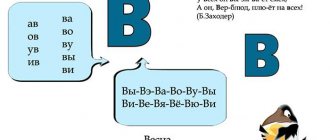Features of the formation of the lexical system in children with general speech underdevelopment
Marina Ostapchuk
Features of the formation of the lexical system in children with general speech underdevelopment
In speech therapy as a pedagogical science, the concept of “general speech underdevelopment ” is applied to this form of speech pathology in children with normal hearing and initially intact intelligence, when the formation of all components of the speech system in their unity (sound aspect of speech , phonemic processes, vocabulary , grammatical structure of speech ).
General underdevelopment of speech can be observed in various forms of speech pathology (according to clinical and pedagogical classification)
: motor, sensory alalia, childhood aphasia, dysarthria, including the erased
form of dysarthria .
Despite the variability in the clinical characteristics of children with general speech underdevelopment , what they have in common is systemic speech underdevelopment .
At the same time, of the formation of vocabulary and grammatical structure of speech especially complex and persistent .
Currently, to the formation of vocabulary in children with general speech underdevelopment . Mastering the vocabulary of the native language is considered as a necessary condition for mastering its grammatical structure, developing coherent monologue speech , and cultivating the sound side of speech .
The formation of vocabulary in children with general speech underdevelopment is manifested in limited vocabulary, a sharp discrepancy between the volume of active and passive vocabulary, inaccurate use of words, numerous verbal paraphasias, unformed semantic fields , and difficulties in updating the vocabulary.
Children with general speech underdevelopment understand the meaning of many words, the volume of their passive vocabulary is close to the norm, but the use of words in expressive speech and updating the vocabulary cause great difficulties. The vocabulary of children with general speech underdevelopment is dominated by nouns and relatively few verbs and adjectives, especially those denoting abstract concepts. There is a large number of substitutions and confusions of words on semantic grounds; a large number of random associations, which indicates the immaturity of the semantic field in children with general speech underdevelopment . Children with speech pathology often used some words with an overly broad meaning, and other words with too narrow a meaning. This is due to a misunderstanding of the meaning of words.
Preschoolers with general speech underdevelopment showed a significant number of non-standard word formations, which are not typical for children with normal speech development.
Characteristic features of the responses of children with general speech underdevelopment are their repetition and uniformity. The lower the level of speech development of a child, the greater the number of replacements of one name with another found in speech , and the replacement words are less well suited to the ones being replaced. The process of searching for a word in children with normal speech development occurs quickly and automatically, while in children with general speech underdevelopment this process occurs slowly and extensively.
The development of vocabulary under normal and pathological conditions is characterized by a number of common features and patterns. The similarity is manifested in the general, progressive nature, in the patterns and sequence of children’s acquisition of various aspects of their native language. Language acquisition by children with general speech underdevelopment is the same complex progressive process as with normal speech . But children with general speech underdevelopment make slow and peculiar progress in mastering their native language. They do not develop a system of interconnected actions and operations with language elements. And this delays the development of their speech .
Children with general speech underdevelopment cannot independently, without outside help, take the only correct path of speech formation - the ontogenetic development of speech in normal children .
Speech therapy work with children with general speech underdevelopment should begin at an early age. Identification of deviations in speech development, their correct classification and overcoming at an age when the child’s language development is far from complete appears to be very difficult. The specialist is required to understand the patterns of development of children's speech in normal and pathological conditions . The system of speech therapy intervention should be based on the gradual acquisition by children of their native language with the correct formation of speech function .
In domestic speech therapy, speech have never been considered outside of connection with the mental development of the child, therefore the relationship between the speech activity of children and all aspects of their psychological development should be the focus of attention of the speech therapist. In parallel with speech therapy work, it is necessary to conduct classes with children to develop their attention, memory, etc. The vocabulary of preschool children with general speech underdevelopment needs not only quantitative, but also qualitative improvement (clarification of the meanings of words, semantic accuracy of the use of synonyms, antonyms, polysemantic words, understanding figurative meanings).
The word is the most important unit of language, which serves to name objects, processes, properties, and work on the word is one of the most important in the overall system of work on speech development . It can be emphasized that an integral property of a word as a unit of language is its meaning. A person’s understanding of the variety of meanings of words develops over many years, so it is necessary to introduce a child to different meanings of the same word in order to ensure the semantic accuracy of its use. The child’s developed ability to use words in accordance with the context and speech situation contributes to the development of the ability to freely choose linguistic means when constructing a coherent statement, freely use words and connect them in meaning. It is the meaning that serves the understanding and more accurate perception of speech . A child’s ability to understand the meaning of words will allow him to consciously master the language, enrich his speech, and improve his verbal culture.
The main task of speech therapy work is to help children with general speech underdevelopment to eliminate the deficiencies observed in their speech , to bring their level of practical vocabulary knowledge closer to the norm , that is, to teach children to use speech as a means of communication. Children must not only remember new words, but also be able to use them freely. One cannot think that a word once used will forever enter the active speech of children with general speech underdevelopment . Even when the meaning of a word is already familiar to the child, in most cases it requires repeated repetition to reproduce it. It is important that children do not develop a formative accumulation of words , but prepare for their conscious use in independent speech .
Ultimately, it is necessary to develop in children the ability to select for expression those lexical means that accurately express the speaker’s intention.
Therefore, the development of vocabulary in preschool children with general speech underdevelopment can be ensured provided that systematic , targeted and differentiated speech therapy work is carried out. Timely correction is a necessary condition for the psychological readiness of children to master school knowledge.
Article:
One of the main indicators of a child’s readiness for successful learning is correct, well-developed speech.
An important point in general speech development is the development of the lexical side, especially in children with general speech underdevelopment. The immaturity of the lexical side of speech is the central link in the structure of the defect in children of this category.
Research devoted to the problem of mastering the lexical aspect of speech by preschool children with SLD was carried out by R.E. Levina, N.A. Nikashina, G.V. Chirkina, T.B. Filicheva, N.S. Zhukova, L.F. Spirova and others. They disclosed approaches, methods, and means of forming lexical components of speech in children with ODD. However, in the practice of teachers of speech therapy groups, a comprehensive approach to the formation of the lexical aspect of speech in preschool children with SLD has not yet been fully used.
A contradiction arises between the task of forming the lexical aspect of speech in preschoolers with ODD and the lack of an integrated approach in the work of the teacher to solve it.
Research problem : how to implement an integrated approach to the formation of the lexical side of speech in preschoolers with ODD.
The purpose of our work : to identify the possibilities of an integrated approach to the formation of the lexical side of speech in preschoolers with ODD.
Object of study : formation of the lexical aspect of speech in preschool children with ODD.
Subject of research : an integrated approach to the formation of the lexical aspect of speech in preschool children with ODD.
hypothesis : The formation of the lexical side of speech in preschoolers with SLD will be successful if an integrated approach is implemented, based firstly on the interaction of all participants in the correctional and developmental space of the preschool educational institution, and, secondly, on consolidating vocabulary in various types of children’s activities.
In accordance with the goal, we set the following tasks :
- To analyze the theoretical and practical state of the problem of the formation of the lexical side of speech in preschool children with ODD.
- To determine the level of development of the lexical side of speech in preschoolers with ODD.
- To identify and experimentally test the possibilities of an integrated approach to the formation of the lexical aspect of speech in preschoolers with SLD.
Research methods: theoretical analysis of literature, conversation, observation, experiment.
At the first stage of our research, we conducted a theoretical analysis of psychological, pedagogical and speech therapy literature on the research problem, which allowed us to come to the following conclusions.
The concept of “lexicon” in the dictionary of linguistic terms is defined as a set of words and associations similar to them in function, forming a certain system. Vocabulary is an internally organized set of lexical units (words, set phrases, clichéd phrases), interconnected by certain, relatively stable relationships, functioning and developing according to certain laws characteristic of the Russian language.
Speech, including its lexical side, develops gradually, step by step. By the age of 5, preschoolers who develop normally in speech have a sufficient vocabulary (3000-4000 words) and master the skills of word formation and inflection.
A different picture of vocabulary development is observed in children with general speech underdevelopment. The process of vocabulary acquisition by children with impaired speech development, in contrast to normal development, occurs at a slower pace. Scientists' works note that in children with ODD, various components of the lexical meaning of words are not fully formed, there is a sharp discrepancy in the volume of passive and active vocabulary, inaccurate use of words, unformed semantic fields, and unique development of vocabulary.
The theoretical analysis data were confirmed during the experiment. A group of 14 children aged 5 years took part in the survey. All children attend the senior group of preschool educational institutions. Having analyzed their speech maps, we found that all children have level II-III OHP due to dysarthria.
The purpose of the first ascertaining experiment was to identify the level of development of the lexical side of the speech of preschoolers with ODD.
To implement it, we used research methods such as conversations with teachers and preschool specialists, observation of the work of teachers and diagnostic tasks.
From a conversation with pre-school specialists, it turned out that all pre-school employees are working on consolidating vocabulary within the thematic cycle. However, observation showed that such work is carried out on a case-by-case basis and there is no interaction between specialists.
The study of the lexical side of children's speech was carried out using the methodology of Volkova G.A.
We compared the results obtained during the examination of children with the conditional levels of development of the lexical aspect of speech in preschoolers with SLD. It turned out that:
- None of the children showed a high level;
- We classified 35% (5) children as average;
- 58% (8) of children can be classified as below average;
- One child showed a low level (7% of the children examined).
Thus, during the ascertaining stage of the experimental study, it was revealed that children with SLD in this group by the age of five are significantly behind children with normal speech development in the formation of the lexical aspect of speech. One of the reasons for this may be the lack of an integrated approach to solving this problem in preschool educational institutions.
In teaching, an integrated approach is a way of constructing the content of education and organizing the learning process based on a single connecting rod.
An integrated approach to speech therapy is a holistic system of working with children with various speech disorders, which, firstly, relies on the interaction of all participants in the correctional and developmental space of a preschool educational institution.
In the process of forming the lexical aspect of the speech of children with ODD, a speech therapist, educator, music director, visual arts teacher, and physical education instructor should participate. Professional interaction, mutual awareness of the stages of work on the development and correction of each child’s speech contribute to the implementation of an integrated approach. The implementation of such interaction is impossible without a single thematic plan, which is drawn up on the basis of the plan of the speech therapist.
The teacher consolidates the speech skills formed by the speech therapist, replenishes, clarifies and activates the children’s vocabulary on each lexical topic during all routine moments, and includes worked out lexical and grammatical structures in situations of natural communication between children.
A physical education instructor, while consolidating vocabulary, can use story-based complexes of general developmental exercises in classes and select games in accordance with the current lexical topic.
The music director and the visual arts teacher enrich and activate the vocabulary during conversations in their classes, teach children to clearly express their thoughts, and answer questions in beautiful, complete sentences.
An important condition for the success of work to eliminate deficiencies caused by speech disorders is targeted assistance from parents of children with speech disorders. The main tasks of parents in consolidating lexical and grammatical categories are determined by the speech therapist.
Secondly, an integrated approach is based on consolidating vocabulary in different types of children’s activities.
This area of work is carried out by the educator, which is associated with the specifics of educational activities. The teacher has the opportunity to repeatedly activate and reinforce new words throughout the child’s entire stay in the preschool educational institution, without which their introduction into independent speech cannot occur.
Carrying out work on a lexical topic is possible already during the morning reception of children. The teacher can conduct finger gymnastics and articulation gymnastics, conversation, didactic games, physical exercises with children during classes in accordance with the lexical topic.
During the walk, work on vocabulary is carried out through observations, during which children improve their ability to speak coherently and answer questions, and outdoor games that use text accompaniment.
After sleep, to consolidate vocabulary, you can play verbal and board-printed games that help enrich and activate the child’s vocabulary on a lexical topic, and apply the acquired knowledge in practice.
During all regime moments, the teacher carries out correctional work, the significance of which is that it provides the opportunity to practice verbal communication of children and consolidate speech skills in their life.
Thus, by building a complex of purposeful actions of all specialists and consolidating vocabulary in different types of children’s activities, it is possible to achieve high-quality formation of the lexical aspect of speech in preschoolers with SLD.
Bibliography
- Alekseeva M. M., Yashina V. I. Methods of speech development and teaching the native language [Text] / M. M. Alekseeva, V. I Yashina - M.: AcademA, 1997. - 399 p.
- Borodich A.M. Methods for developing children's speech. [Text] / A. M. Borodich - M.: Prochveshchenie, 1981. - 256 p.
- All about children. Preschool childhood. Speech development in preschool age [Electronic resource] / Access mode: https://www.vseodetishkax.ru.
Psychological and pedagogical characteristics of children with special needs development
General speech underdevelopment is considered to be a form of speech anomaly in which a child with normal hearing and intact intelligence finds all components of the language system unformed: phonetics, vocabulary and grammar.
All children with OHP always have a violation of sound pronunciation, underdevelopment of phonemic hearing, and a pronounced lag in the formation of vocabulary and grammatical structure of speech.
OHP can manifest itself to varying degrees. Therefore, today there are four levels of speech development. V.P. Glukhov o(1).
Level 1 of speech development is characterized by a complete or almost complete absence of speech. Phrasal speech in such children is almost completely absent; when trying to talk about an event, they are able to name only a few words or one or two highly distorted sentences.
The 2nd level of children's speech development is characterized by the beginnings of common speech. Children use simple phrases, consisting of two or three, rarely four words, or distorted phrases in communication, and have a command of everyday vocabulary. They can answer questions, talk about the picture with the help of the teacher, and talk about the family.
The vocabulary of these children lags behind the age norm. This is manifested in ignorance of words denoting, for example, parts of the body (torso,
elbow, shoulders, neck, etc.), names of animals and their babies, various professions, pieces of furniture (folding bed, stool), etc.
Children do not know many colors, shapes, sizes of objects, etc. Children often replace words with others that are similar in meaning, for example, pours soup instead of pours.
Gross errors in grammar are noted: incorrect use of case forms, errors in the use of masculine and feminine nouns, lack of agreement of adjectives and numerals with nouns. Prepositions are omitted or replaced by others.
The syllabic structure of words and sound content are grossly disrupted: there is a reduction in the number of syllables (“pamika” - pyramid), rearrangement and addition of syllables (“yadygi” - berries, “calf” - calf), loss of sounds (“vok” - wolf, “kaf” - closet).
A speech therapy examination can detect insufficient phonemic hearing and perception in children.
The 3rd level of speech development is characterized by the presence of extensive phrasal speech with elements of lexico-grammatical and phonetic-phonemic underdevelopment. Children can communicate relatively freely with others, but they need constant help from parents (educators) who introduce appropriate explanations into their speech.
Independent communication continues to be difficult and limited to familiar situations. The shortcomings are most clearly manifested in different types of monologue speech - description, retelling, stories based on a series of paintings, etc. V.P. Glukhov writes: “Children’s independent monologue statements are characterized by the use of predominantly short phrases, errors in the construction of detailed sentences, difficulties in choosing the necessary lexemes, violations of the semantic organization of statements, and a lack of connection between the elements of the message.
A number of children experience significant difficulties when composing individual sentences based on visual support, which may be due to the inability to establish predicative relationships, as well as difficulties in the lexical and grammatical formatting of statements. Lack of independence in composing stories, violations of the logical sequence of presentation, semantic omissions, incompleteness of fragments-microthemes, long pauses at the boundaries of phrases or their parts may indicate difficulties in programming the content of detailed monologue statements.”
A limited vocabulary and repeated use of identical-sounding words with different meanings make children’s speech poor and stereotypical. Among the lexical errors there are the following: replacing the name of a part of an object with the name of the whole object (the dial is “watch”, the bottom is “teapot”); substitution of names of professions with names of actions (ballerina - “aunt is dancing”, singer - “uncle is singing”); replacing specific concepts with generic ones and vice versa (sparrow - “bird”, trees - “Christmas trees”), etc.




